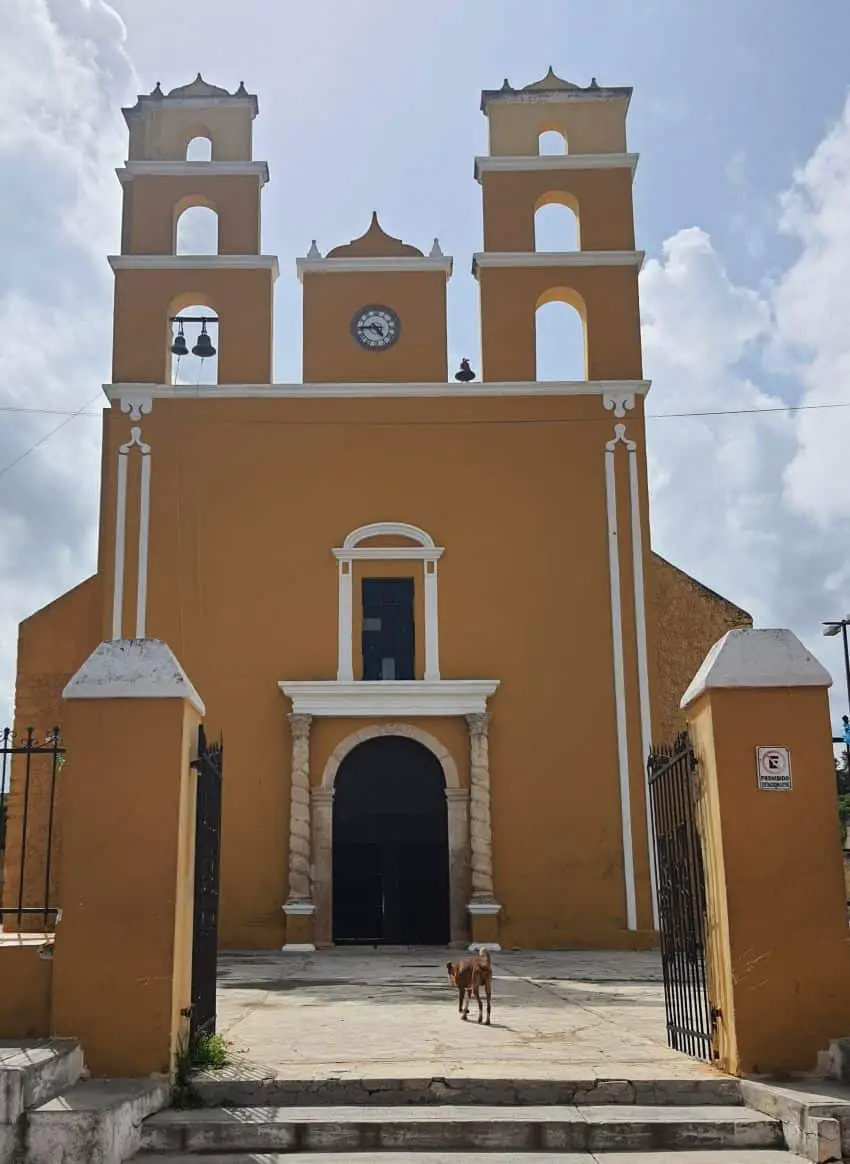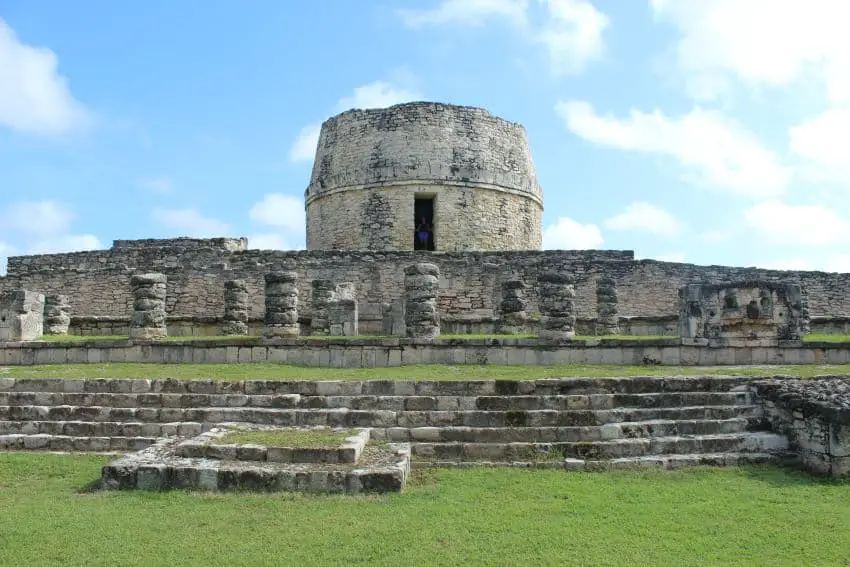With a beautiful mix of pre-Columbian and colonial eras, history buffs are sure to love the experiences the state of Yucatán has to offer. You may know about popular tourist attractions such as Chichen Itzawhich attracts many visitors. However, if you prefer to visit less visited places without missing out on the cultural experience, take a day trip along the Convent Route.
The ancient Maya had settled in the region even before 1500 BCE, and numerous archaeological sites bear witness to their advanced civilization. The Spanish arrived in Yucatán in the early 16th century, and colonial architecture and churches from that period are also widely visited today. The Route of the Monasteries is one of the best ways to experience both cultures south of Mérida.


What is the Monastic Route?
This circuit takes you through several towns with colonial churches, monasteries and ancient Mayan sites. A popular option is to travel from Mérida to Maní, which can be done in a day. Some definitions of the Monastery Route include: yellow city of izamal and other cities, but you may need more time to explore the entire area.
We've put together this guide to help you visit some of the top attractions on or near the Convent Route. It's best to take your own transport and start your day early.
Aceh
Aceh located approximately 25 kilometers from Mérida via highways 180 and 184. The ancient Maya first inhabited the area in 700-50 BCE. The central pyramid, which you won’t want to miss, houses some magnificent stucco masks. You can buy tickets from the National Institute of Anthropology and History (INAH) office across the street. Climb the steps to the masks for a closer look. Their features are thought to represent the Mayan sun god Kinich Ahau. INAH staff can also let you into the Stucco Palace on Calle 18. Once inside, look for the famous 13-meter-tall mask.-long plaster decoration with anthropomorphic figures.
Across the road from the main pyramid is a brightly painted 16th century church dedicated to Our Lady of the Nativity that is well worth a visit. Nearby are also the convent and church of Our Lady of Guadalupe.


If you have more time or want to get off the Monastery Route to soak in a cenote, head to Cuzamá or Homún, which are a 25-30 minute drive from Acancéh. I recommend doing a separate cenote trip so you can relax and enjoy the beauty without rushing.
Tecoh
From Acancéh, continue south about 10 kilometers to Tecoh. The town has a church dedicated to Our Lady of Assumption. The church appears to be built on the base of an ancient pyramid, which is a common sight in the area. The interior of the church, especially the altar, is interesting to see.
Less than 20 minutes from the city is Hacienda Sotuta de Peon. They offer a wide range of adventure and wellness experiences.Indonesian: and you can book a tour that will give you a glimpse into the once-lucrative henequen industry in the area. These tours take several hours and may require a separate visit. The hacienda also has accommodations and a cenote.
Telchaquillo and Mayapan
Approximately 13 kilometers from Tecoh via the highway 184 is Telchaquillo, with a church and cenote nearby. It's worth a visit if you have time. If not, continue on for five minutes to archaeological site The Mayans.


First occupied around 300 BC, Mayapán became an important city around the 13th century.th up to 15th centuries. With few visitors, the site is peaceful and ideal for a leisurely visit. It’s best to get there as early as possible to avoid the midday heat. Climbing Kukulcán Castle, the site’s 18-meter-tall main pyramid, can be a bit tiring, but offers spectacular views.
The area has several cenotes. I recommend Noh Mozon, which is hidden in the wilderness about 10 kilometers from Telchaquillo. However, the poor road conditions mean you will lose about an hour there and back, so it might be better to go another day.
Tekit, Mama, Chumayel and Teabo
Take Highway 184 to Tekit, which is about 18 kilometers from Mayapán. Famous for its guayabera shirts, Tekit is a great place to shop for traditional clothing if you’re not too tired. The town also has a beautiful 16th-century church dedicated to Saint Anthony of Padua.
Next, you can continue your journey to Mama, whose name is considered “No No” in English, since “ma” is equivalent to “no” in the Yucatec Maya language. Here, you can see the Church of the Ascension, a unique church with a bell-shaped dome. Mama also has a former Franciscan monastery and a chapel that are worth visiting.
If you want to see more towns and churches before visiting Pueblo Mágico Maní, visit Chumayel, about nine kilometers from Mama. This town is famous for being the origin of the Chilam Balam of Chumayel. Named after the town where they lived, the Book of Chilam Balam is a manuscript containing information related to the ancient Maya, including rituals, medicine, and astronomy. Chuyamel is also home to a 16th-century church, the Shrine of the Immaculate Conception. Less than 10 minutes from Chumayel is the town of Teabo, which has a beautiful former monastery and parish.


Peanut
With its colorful decorations and buildings, Maní really gives you the feel of a magical city. But unfortunately, the city also has a dark history. The city was the site of a 16th-century tragedy: the auto-da-fé of Maní. The Spanish Inquisition court led by Franciscan friar Diego de Landa burned dozens of ancient Mayan manuscripts, destroying the knowledge contained within them forever.
In the town's main square is the former monastery of San Miguel Arcángel, with a large atrium and open-air chapel. The altar and remains of old murals in the interior of the church are also worth seeing. After visiting the monastery, take a stroll around the town's main square and market to buy traditional goods such as honey-based products, clothing and souvenirs. The town is also famous for Melipona beekeepingso you can visit the meliponario, or Melipona bee farm, like House of the Sun or Meliponario Lool-Ha.
Depending on when you arrive, enjoy a late lunch or early dinner at Maní. If you prefer meat, try the town’s famous Poc Chuc, a citrus-marinated grilled meat dish usually made with pork. Prince Tutul Xiu is a popular restaurant for Poc Chuc.
From Maní, you can also connect to Puuc Route and visit some of the lesser known archaeological sites in the Puuc region.
Thilini Wijesinhe, a finance professional turned writer and entrepreneur, moved to Mexico in 2019 from Australia. She writes from Mérida, Yucatán. Her website can be found at https://thilini.me/